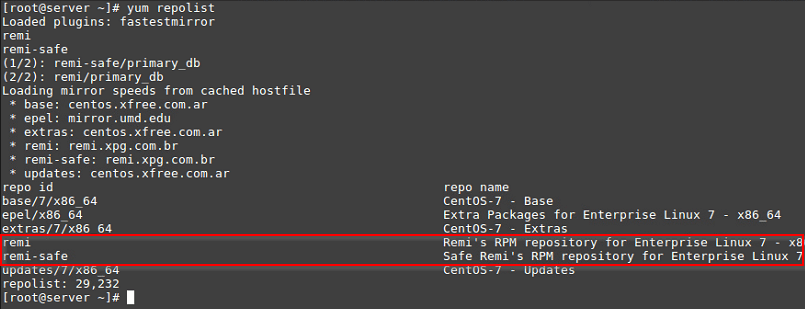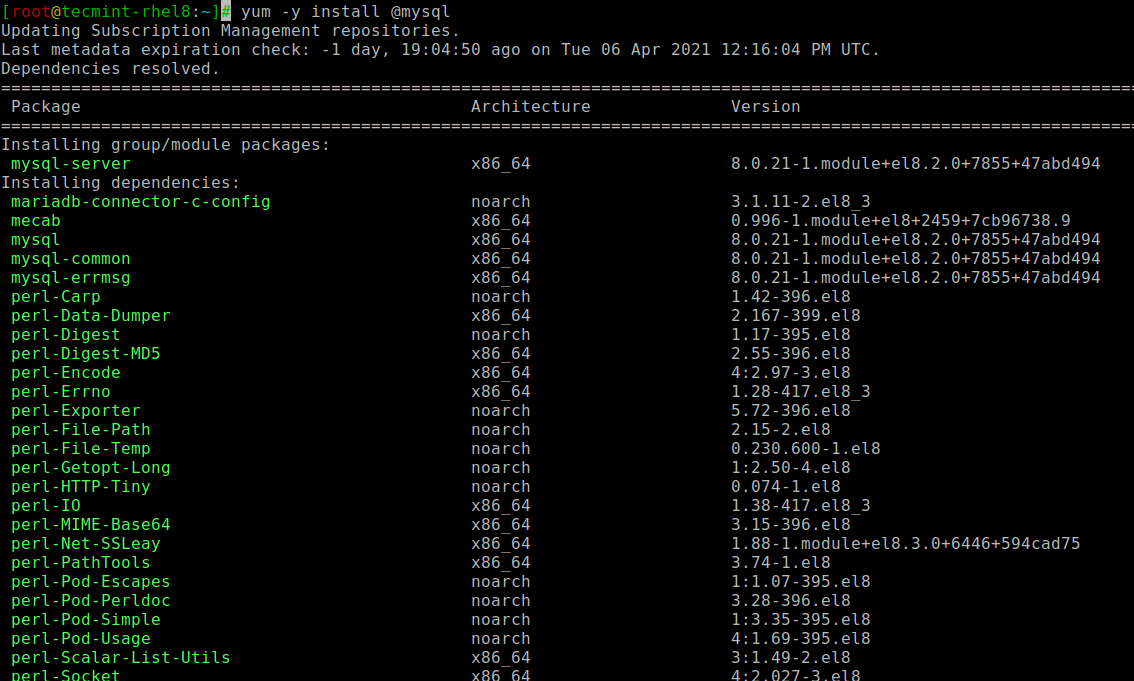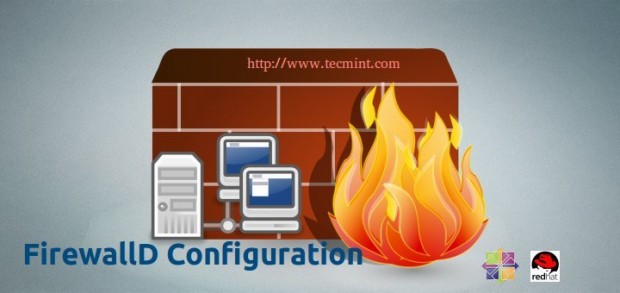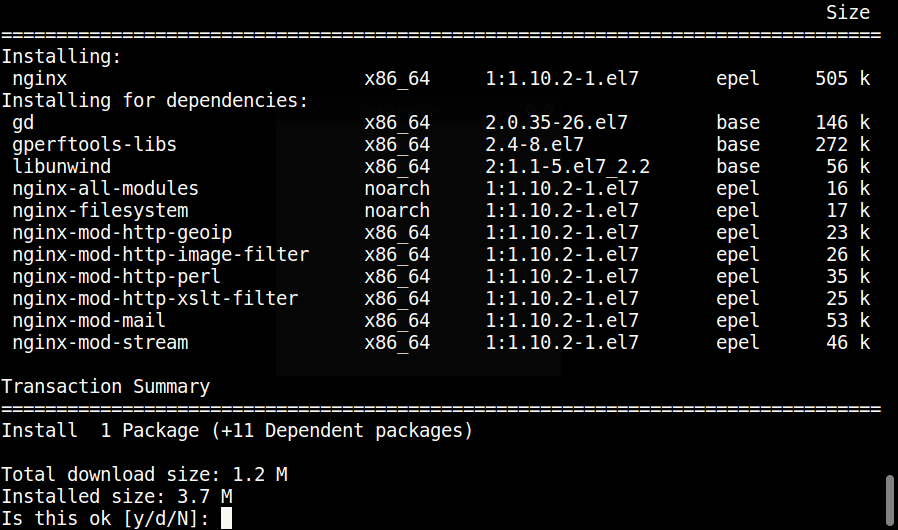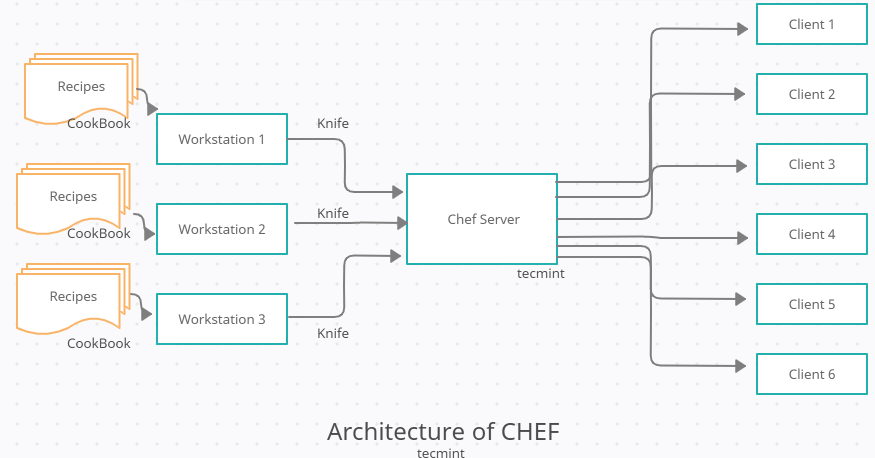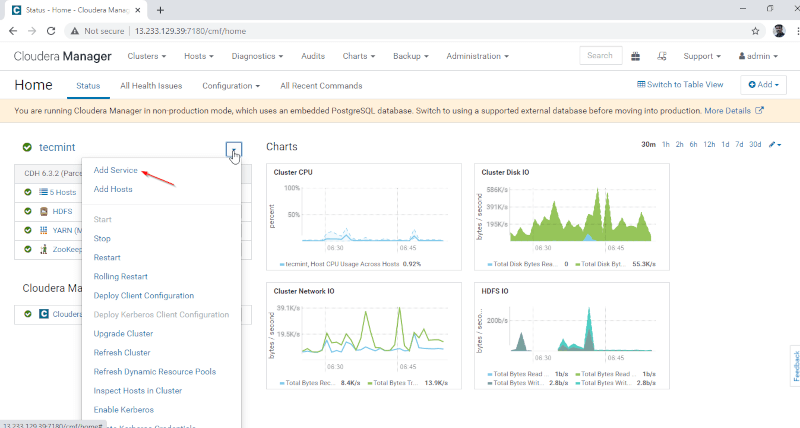If you are a system administrator, a developer, or a DevOps engineer, chances are that at some point you’ve had to set up (or work with) a LAMP (Linux / Apache / MySQL or MariaDB / PHP) stack. The web and database servers, along with the well-known server-side language, are not available in their latest
RedHat - Page 2 of 8 - DesignLinux
How to Setup MySQL Master-Slave Replication on RHEL 8
MySQL Replication is a process where data from one server is automatically copied or replicated onto another backup server in real-time. Replication provides redundancy and fault tolerance and gives the user peace of mind that even after a failure in the master server, data can still be recovered. In this tutorial, you are going to
How to Install Mosh Shell as SSH Alternative on Linux
Mosh, which stands for Mobile Shell is a command-line application which is used for connecting to the server from a client computer, over the Internet. It can be used as SSH and contains more feature than Secure Shell. It is an application similar to SSH, but with additional features. The application is written originally by
How to Configure FirewallD in RHEL, CentOS and Fedora
Net-filter as we all know it’s a firewall in Linux. Firewalld is a dynamic daemon to manage firewalls with support for network zones. In the earlier version, RHEL & CentOS 6 we have been using iptables as a daemon for packet filtering framework. In RHEL/CentOS 7/8 and Fedora iptables interface is being replaced by firewalld.
How to Install CHEF Workstation in RHEL and CentOS 8/7
Chef is one of the popular configuration management tools, which is used to rapidly automate deployment, configurations, and management of the entire IT infrastructure environment. In the first part of this Chef series, we’ve explained Chef concepts, which consists of three important components: Chef Workstation, Chef Server & Chef Client/Node. In this article, you will
How to Install Terraform in Linux Distributions
In this article, we will discuss what Terraform is and how to install terraform on various Linux distributions using HashiCorp repositories. What is Terraform? Terraform is a popular cloud orchestration tool in the world of automation, which is used to deploy your infrastructure through the IAC (Infrastructure as code) approach. Terraform is built by Hashicorp
How to Speed Up Apache with Varnish Cache on CentOS 7
Varnish Cache (commonly known as Varnish), is an open-source, popular reverse-proxy HTTP accelerator intended for speeding up web servers. It is engineered for excessively utilized API endpoints and also for dynamic sites that serve massive-content and experience high-traffic. For Nginx: How to Install Varnish Cache for Nginx on CentOS 7 It basically helps to scale
How to Speed Up Nginx with Varnish Cache on CentOS 7
Varnish Cache (also referred to as Varnish) is an open-source, high-performance HTTP accelerator designed for speeding up web servers. In our last articles, we’ve explained how to setup Varnish Cache for Apache on CentOS 7 and CentOS 8. In this article, we will show you how to install and use Varnish Cache as a front-end
What is Automation and Configuration Management with CHEF – Part 1
Let’s take a simple scenario, you have 10 redhat servers where you have to create a ‘tecmint’ user in all the servers. The direct approach is, you need to login into each server and create the user with the useradd command. When the servers are 100s or 1000s, login into all servers one by one
How to Install and Configure Hive with High Availability – Part 7
Hive is a Data Warehouse model in Hadoop Eco-System. It can perform as an ETL tool on top of Hadoop. Enabling High Availability (HA) on Hive is not similar as we do in Master Services like Namenode and Resource Manager. Automatic failover will not happen in Hive (Hiveserver2). If any Hiveserver2 (HS2) fails, running jobs

